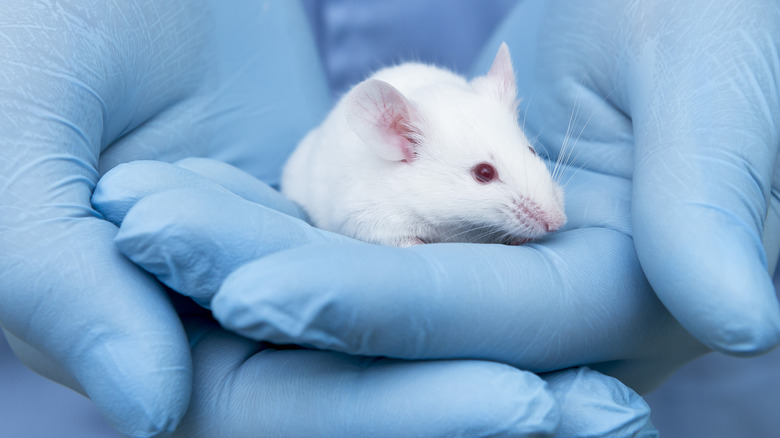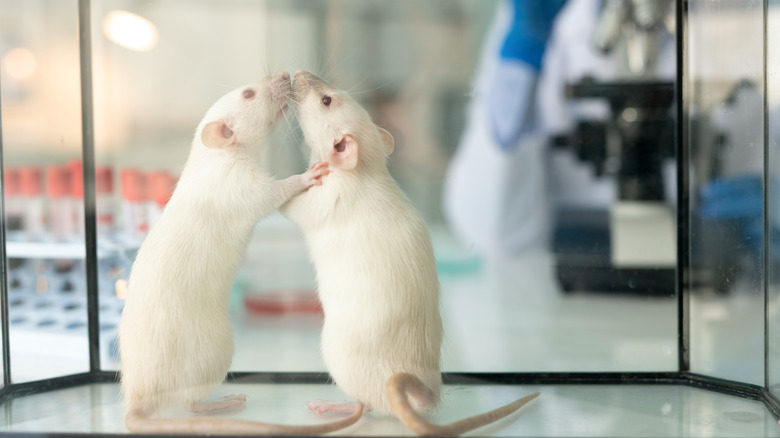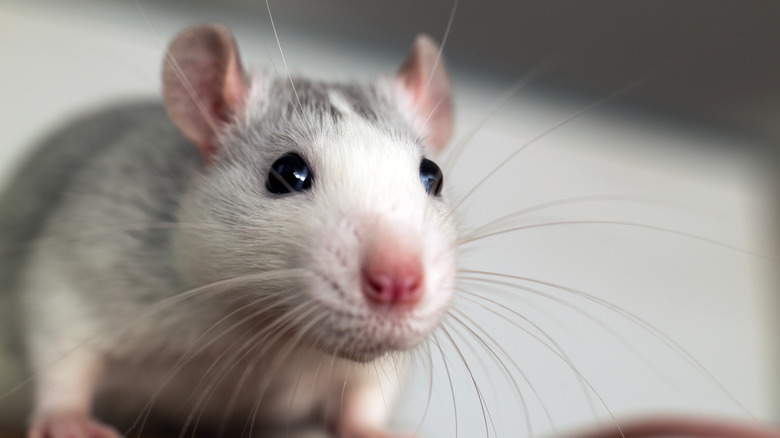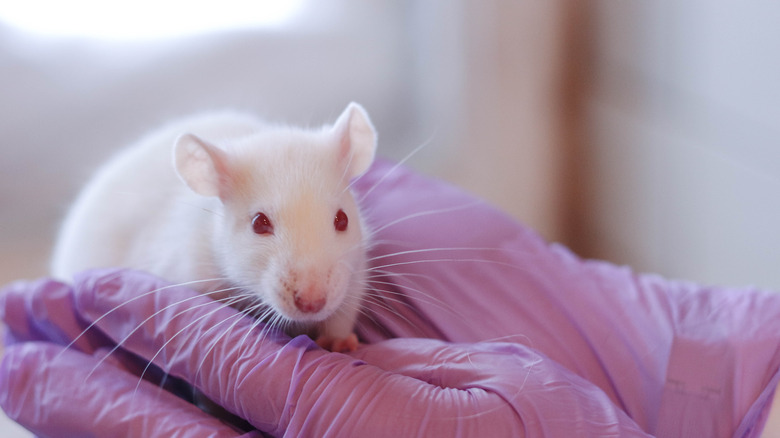Why Are Rats And Mice The Animal Of Choice For Scientists?
Lab rats are so commonly used for scientific research that the term has become an idiom (via Grammarist). But though testing on rats and mice might seem natural to us now, if you really think about it, it seems like a pretty random decision.
Why do we use rats in research? It's not because all humans hate rodents and want to inflict pain upon them whenever possible. Rats and mice, which have been used for studies since the 1850s and early 1900s, respectively, are actually protected by a host of different ethical rules about animal testing, according to Smithsonian Magazine. These rules ensure lab rats are only used when absolutely necessary. Plus, scientists usually do their best to make sure the rats and mice are comfortable. For instance, researchers stopped handling rats by their tails after research showed it stressed the animals out, per Smithsonian Magazine.
The real factors influencing why rats and mice are used in research are actually pretty complex and satisfyingly scientific. The elements under consideration include the animals' temperament, high similarity to humans, and rate of reproduction (via Live Science).
Reasons scientists use mice and rats in testing
Unlike larger animals, rats reproduce rapidly, according to Live Science. Their pregnancies only last around three weeks and within only six weeks after that, the baby rats can grow into sexually mature adults (via a 2013 article published by Missouri Medicine, posted at the National Library of Medicine). That means many generations of rats can be studied in just one research program, allowing scientists to examine how genes are passed down between generations.
Additionally, rats and mice are easy to deal with. As small, tame animals, scientists usually don't tend to have issues with using them, per Live Science. Plus, they're pretty adaptable creatures who can get used to lots of different environments, including the strange environment of the lab.
And, of course, there's the perpetual issue of price. Because rats and mice breed so quickly and are so small, they're pretty cheap animals to procure, bringing down research costs (via Live Science).
Rats and mice are genetically similar to humans
But one of the most important reasons scientists use mice and rats? Genetically, they have a surprising amount in common with humans, according to Live Science. Though we like to think we're a lot better than these mere rodents, we actually share about 95% of our genetic code with them (via the National Library of Medicine). That makes them a relatively good comparison for humans, especially considering we've completely sequenced the genomes for humans, mice, and rats, making it easy to isolate and compare equivalent genes.
On top of that, specific mice and rats can be bred that mimic certain conditions in humans. For instance, mice have been specifically bred that contain a mutated gene that causes hereditary deafness. By looking at these mice, we can do the type of controlled experiments that aren't possible in humans, according to the National Library of Medicine.
What happens to lab rats after research is done?
Mice and rats aren't created equal. The two animals are used for different purposes and different experiments. For instance, rats are considered more ideal for cardiovascular work, toxicology studies, and behavioral research, according to the National Library of Medicine. On the other hand, you might be familiar with mice from studies like one in which cartilage in the shape of a human ear was grown on a mouse's back, or a study in which brain cells were implanted in a mouse's skull (via Smithsonian Magazine).
But regardless of their uses, most lab mice and rats meet the same fate. Unfortunately, they're usually killed upon the completion of the study, according to Smithsonian Magazine. In some studies, scientists dissect the rats and examine how they've been physiologically affected by a given study (via ABC10). Each year, around 100 million lab rats and mice are killed in the U.S., per Smithsonian Magazine.



